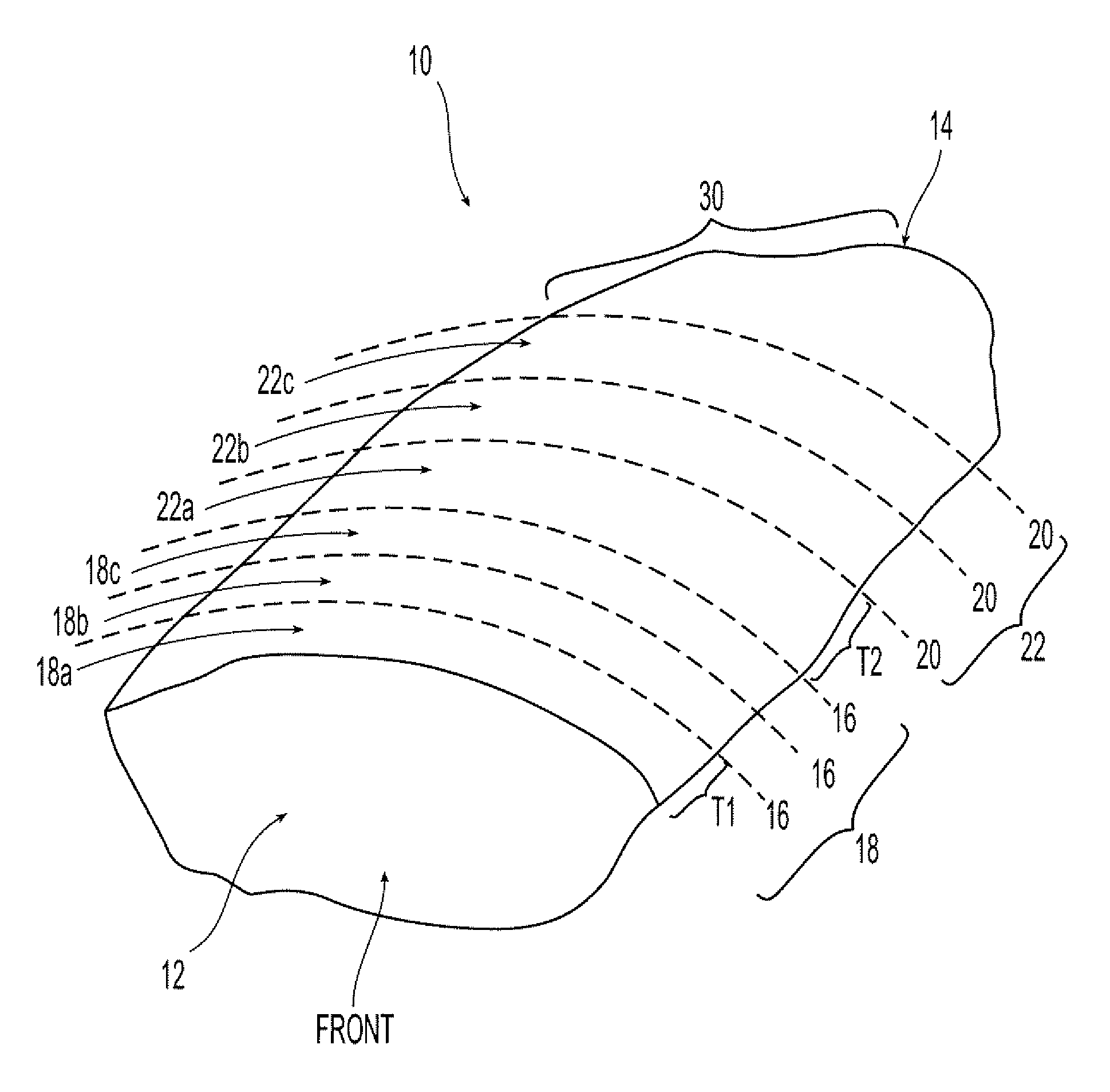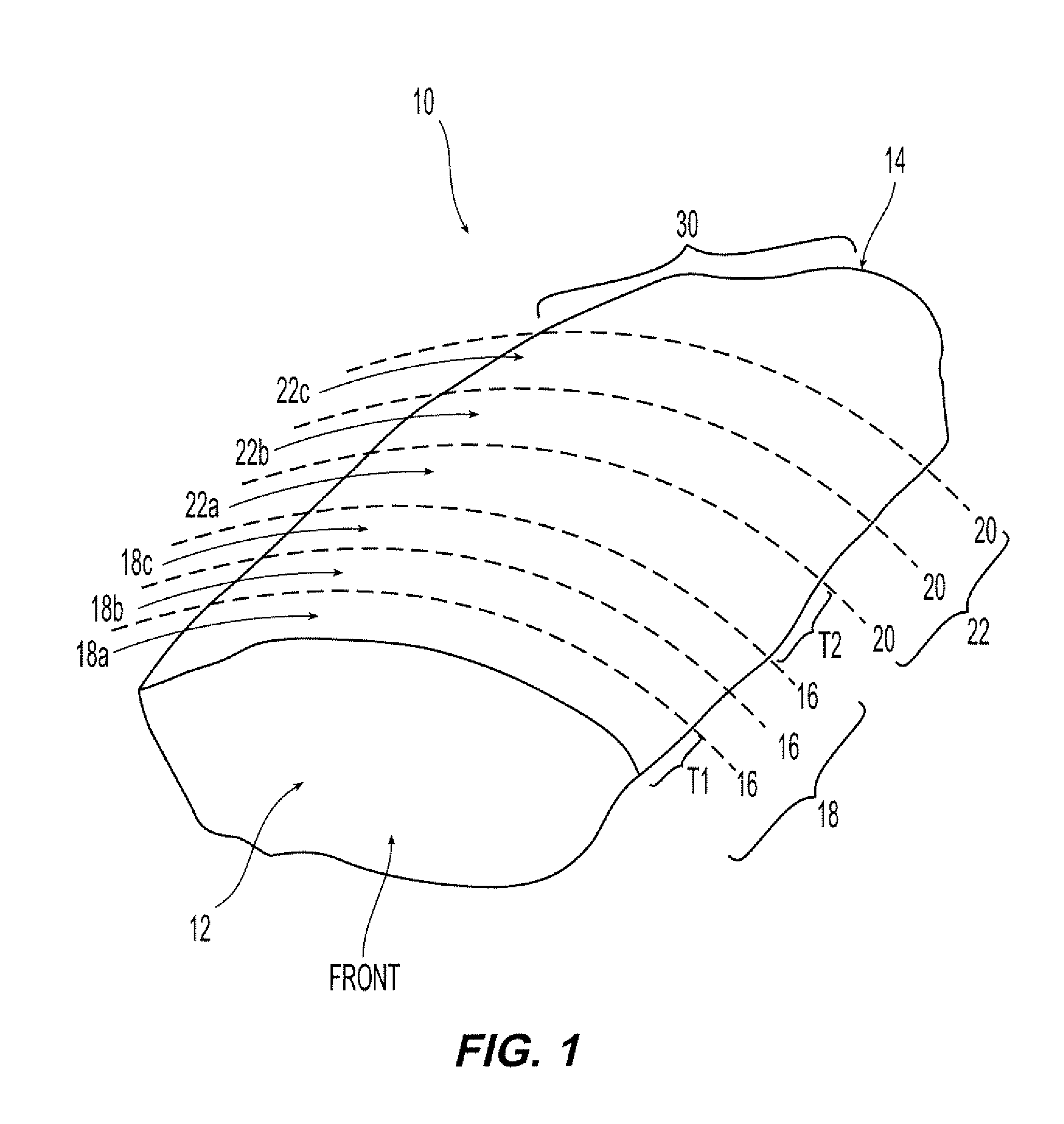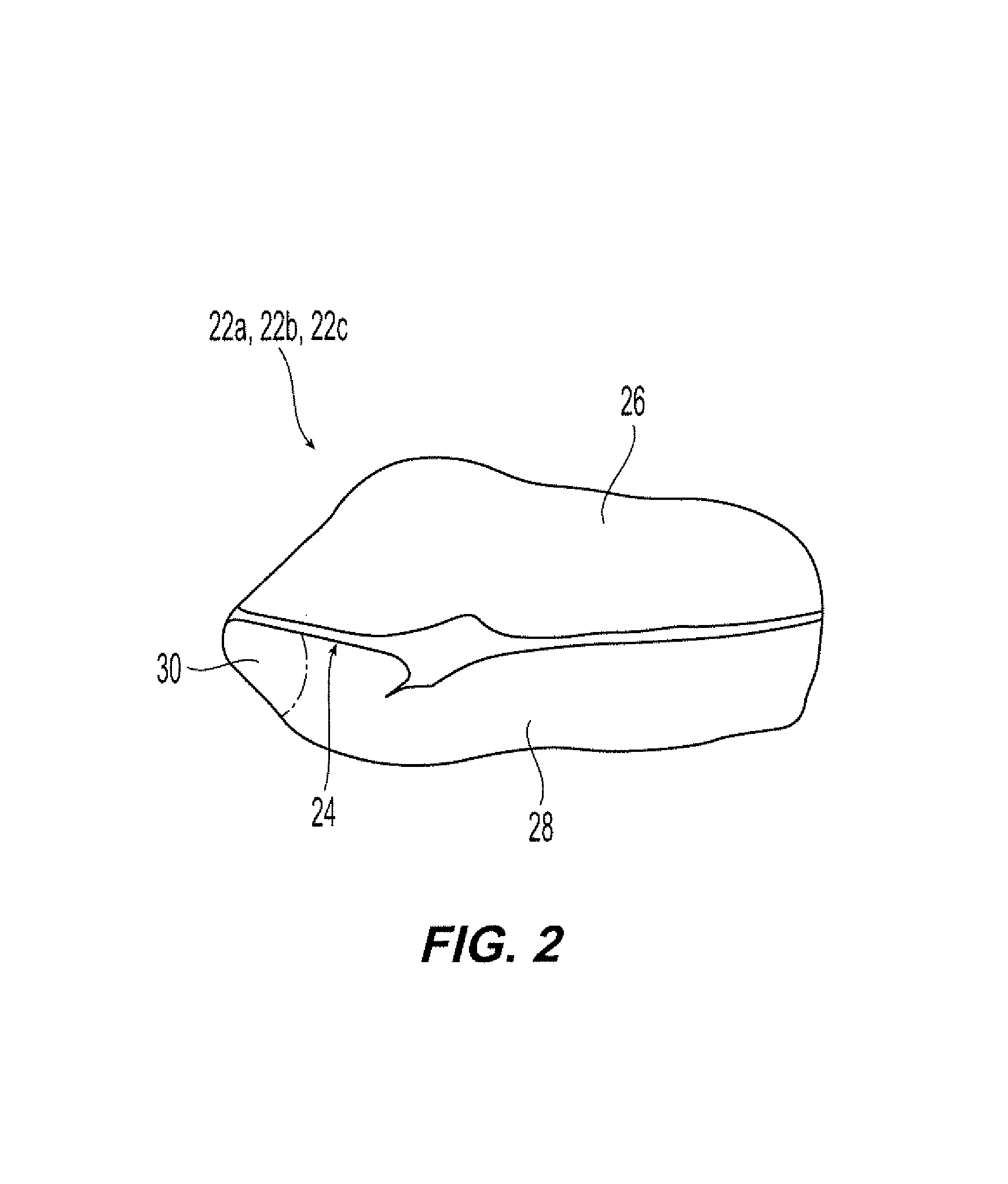Butchering processes for meat products
a technology for meat products and butchering, applied in meat processing devices, meat processing plants, meat shaping/cutting, etc., can solve problems such as complex chucks, and achieve the effect of increasing weigh
- Summary
- Abstract
- Description
- Claims
- Application Information
AI Technical Summary
Benefits of technology
Problems solved by technology
Method used
Image
Examples
Embodiment Construction
[0018]The chuck is generally the shoulder region of the animal, and includes part of the neck and backbone, the first five ribs (U.S. packer / processors typically make the chuck / rib break between the 5th and 6th ribs), as well as portions of the shoulder blade and upper arm. It can weigh over 100 lbs.
[0019]Among the cuts derived from the chuck is the chuck roll, which is formed of muscle, fat, and connective tissue and typically weighs between 13 and 21 lbs. In particular, a beef chuck roll may be a generally oblong boneless portion of beef that is derived from a neck off boneless square-cut chuck (square blade chuck). The chuck roll may be produced from the upper portion of the chuck. In one preferred exemplary embodiment, the chuck roll includes the large muscle system that lies beneath the blade bone. The muscle system may be formed of the longissimus dorsi, rhomboideus, spinalis dorsi, complexus, multifidus dorsi, serratus ventralis, subscapularis and splenius. The chuck roll may...
PUM
 Login to View More
Login to View More Abstract
Description
Claims
Application Information
 Login to View More
Login to View More - R&D
- Intellectual Property
- Life Sciences
- Materials
- Tech Scout
- Unparalleled Data Quality
- Higher Quality Content
- 60% Fewer Hallucinations
Browse by: Latest US Patents, China's latest patents, Technical Efficacy Thesaurus, Application Domain, Technology Topic, Popular Technical Reports.
© 2025 PatSnap. All rights reserved.Legal|Privacy policy|Modern Slavery Act Transparency Statement|Sitemap|About US| Contact US: help@patsnap.com



